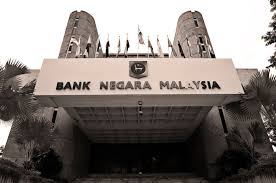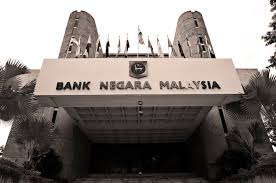
A $500 million question making the rounds of the global banking industry is how Malaysia's central bank managed to simultaneously increase its foreign exchange reserves and meddle in markets to support its currency.
The ringgit was particularly hard hit in the "Trump tantrum" of emerging market fund outflows in the wake of Donald Trump's surprise U.S. election win on November 8 and Malaysia's central bank, Bank Negara Malaysia (BNM), said last week it was intervening in the market to support the ringgit.
And since the central bank would usually need to sell foreign currencies to purchase ringgit, that intervention should have showed up in the country's foreign-exchange reserves as a decline.
Instead, as of November 15, its international reserves amounted to 407.8 billion ringgit, equivalent to $98.3 billion, as of November 15, the central bank said on Tuesday. And, according to a November 7 statement issued by it, this was more than the 405.5 billion ringgit, or $97.8 billion, it had as of October 31.
While at least one analyst noted the seeming discrepancy in the figures, there were no comments made ot the media by BNM.
"A surprise increase in foreign-exchange reserves and BNM reassuring investors that capital markets and the banking system is deep and liquid in their policy statement leaves more questions than answers," Jason Daw, a foreign-exchange analyst at Societe Generale, said in a note on Thursday.
"Valuation effects alone should have caused reserves to fall and it is unlikely that dollar buying occurred in the November 1-15 period," he said. he speculated that for dollar liquidity, Malaysia's swap line with China's central bank, the People's Bank of China (PBOC), may have been tapped.
Primarily aimed at supporting trade and investment, the swap arrangement allows the two central banks to provide liquidity in each other's currencies.
‘Significant sources’ such as a Chang Mai swap line, IMF credit facilities and the PBOC swap line are available with Malaysia to manage any stress from outflows, Daw noted. But "sentiment has been damaged and the ringgit should remain on edge," he added.
"Reassuring words alone will be insufficient to change the trend," he added.
There have been unremittingly negative trends for the ringgit since the U.S. election results. With the greenback fetching as much as 4.4630 ringgit, its highest since September 2015 and flirting with levels last seen during the Asian Financial Crisis in 1997, by Thursday, dollar climbed as much as 6.5 percent against the Malaysian currency for the month so far.
Warning to foreign banks to restrict trading in offshore non-deliverable forwards (NDFs) on the currency, which have fallen further than the spot rate, by the central bank resulted in a the sentiment on the ringgit also getting hurt.
That move spooked traders even though it appeared to be only a reinforcement of existing regulations. Since Malaysia was the first to impose tea-leaf reading over capital controls during the Asian Financial Crisis, markets tend to be more sensitive to them in Malaysia.
(Source:www.cnbc.com)
The ringgit was particularly hard hit in the "Trump tantrum" of emerging market fund outflows in the wake of Donald Trump's surprise U.S. election win on November 8 and Malaysia's central bank, Bank Negara Malaysia (BNM), said last week it was intervening in the market to support the ringgit.
And since the central bank would usually need to sell foreign currencies to purchase ringgit, that intervention should have showed up in the country's foreign-exchange reserves as a decline.
Instead, as of November 15, its international reserves amounted to 407.8 billion ringgit, equivalent to $98.3 billion, as of November 15, the central bank said on Tuesday. And, according to a November 7 statement issued by it, this was more than the 405.5 billion ringgit, or $97.8 billion, it had as of October 31.
While at least one analyst noted the seeming discrepancy in the figures, there were no comments made ot the media by BNM.
"A surprise increase in foreign-exchange reserves and BNM reassuring investors that capital markets and the banking system is deep and liquid in their policy statement leaves more questions than answers," Jason Daw, a foreign-exchange analyst at Societe Generale, said in a note on Thursday.
"Valuation effects alone should have caused reserves to fall and it is unlikely that dollar buying occurred in the November 1-15 period," he said. he speculated that for dollar liquidity, Malaysia's swap line with China's central bank, the People's Bank of China (PBOC), may have been tapped.
Primarily aimed at supporting trade and investment, the swap arrangement allows the two central banks to provide liquidity in each other's currencies.
‘Significant sources’ such as a Chang Mai swap line, IMF credit facilities and the PBOC swap line are available with Malaysia to manage any stress from outflows, Daw noted. But "sentiment has been damaged and the ringgit should remain on edge," he added.
"Reassuring words alone will be insufficient to change the trend," he added.
There have been unremittingly negative trends for the ringgit since the U.S. election results. With the greenback fetching as much as 4.4630 ringgit, its highest since September 2015 and flirting with levels last seen during the Asian Financial Crisis in 1997, by Thursday, dollar climbed as much as 6.5 percent against the Malaysian currency for the month so far.
Warning to foreign banks to restrict trading in offshore non-deliverable forwards (NDFs) on the currency, which have fallen further than the spot rate, by the central bank resulted in a the sentiment on the ringgit also getting hurt.
That move spooked traders even though it appeared to be only a reinforcement of existing regulations. Since Malaysia was the first to impose tea-leaf reading over capital controls during the Asian Financial Crisis, markets tend to be more sensitive to them in Malaysia.
(Source:www.cnbc.com)





